Beauty + History >>> PAMUKKALE
PAMUKKALE, one of Turkey's most famous landmarks, Pamukkale "means cotton castle" is a marvelously surreal natural wonder that is a must-do attraction on your travels in Turkey. Rippling out in a series of semi-circular travertines, this pure-white mountain, set among the green farming fields, makes for some bizarrely beautiful photographic opportunities. In a two-in-one deal, up on the summit lie the remains of the Roman spa town of Hierapolis, with the renowned hot spring pool, where you can do as the Roman's did and bathe away your aches and pains.
Firstly, I will show you some photos taken by my phone’s camera in 2016 then I will show the most tourist attractions in Pamukkale with information.
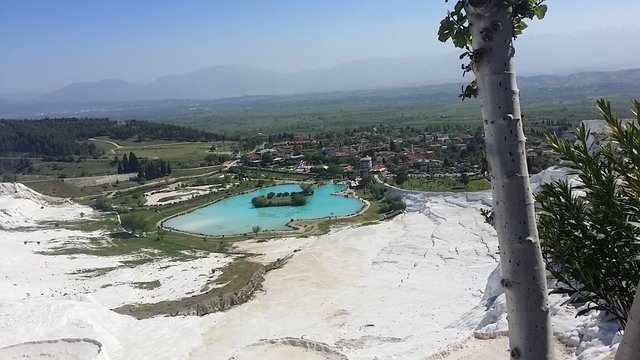
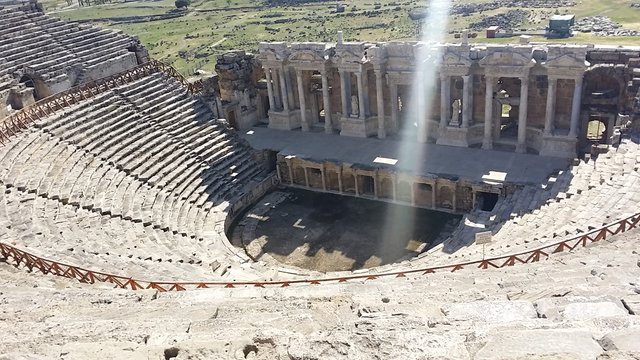
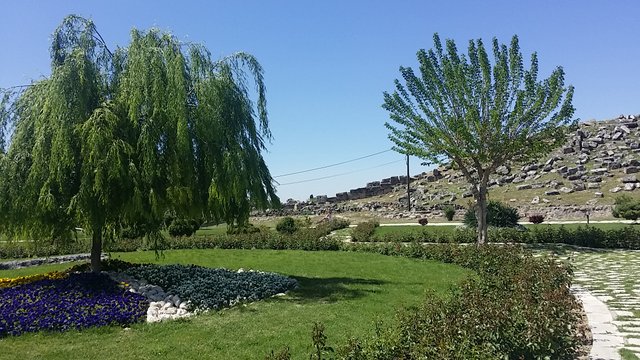
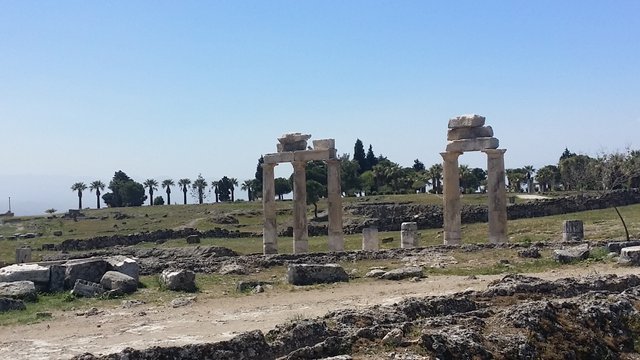
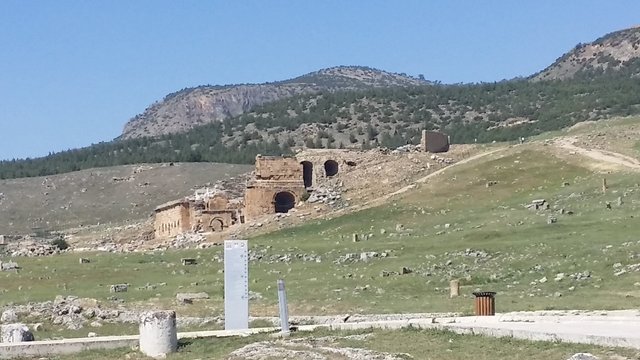
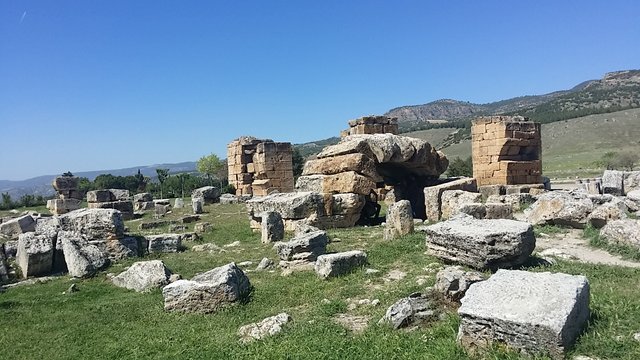
1. Travertines

The dazzling white calcite cliff of Pamukkale was created by calcium deposits from the area's hot springs. In the same way that stalactites form within limestone caves, the deposits grow on the steep slopes, gradually fanning out to form natural terraces.The terraces at the upper levels hold pools of water, which you can sit in.
2. Hierapolis Theater
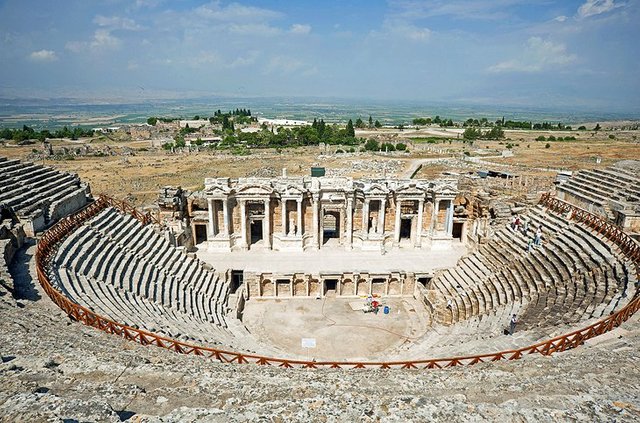
On a slope above the rest of the Hierapolis ruins is the mighty theater, with its facade over 100 meters long and two tiers of seating, each with 26 rows. Built during the reigns of the Roman Emperors Hadrian and Septimius Severus, the theater is incredibly well-preserved. It has retained much of its original detail, with the imperial boxes (where VIP guests would have watched the entertainment) and some decorative panels along the stage still surviving.
3. Pamukkale Antique Pool
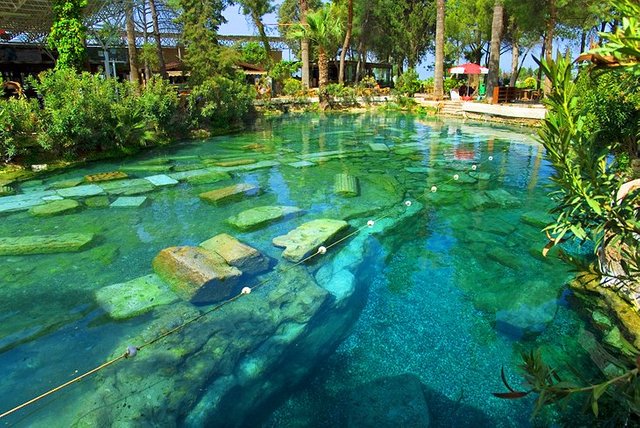
If you want to partake in some restorative hot pool soaking just like the Romans did - but without the togas - then look no further. Pamukkale's Antique Pool (beside the Temple of Apollo) allows you to soothe those weary travel muscles in mineral-rich hot spring water that is a steady 36°C. It's possibly the most atmospheric hot spring experience you'll ever have, with half-submerged columns and chunks of fallen marble scattered in the water all around you.
4. Hieropolis Museum
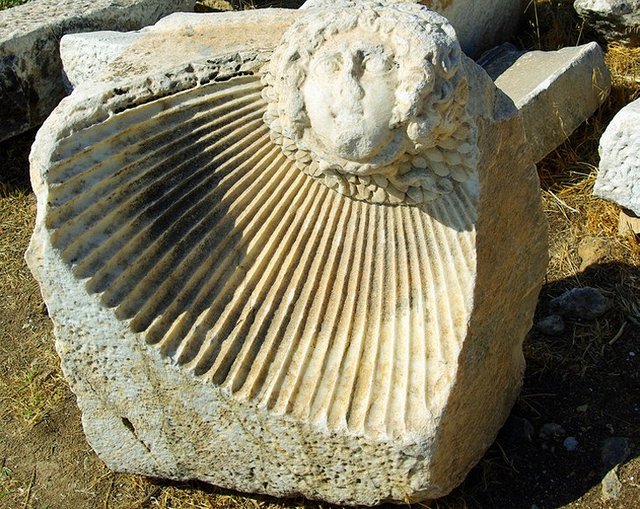
This small but excellent museum dedicated to Hierapolis is inside the ancient city's former Roman bath house. A visit here will help bring the city to life. The exhibits showcase some of the beautiful artistry and cultural heritage of this once important city, displaying a variety of finds from the site, including gorgeous and intricate stone reliefs, sarcophagi, and statuary. The museum also has a decent collection of statuary from the nearby archaeological site of Aphrodisias.
5. Pamukkale Castle
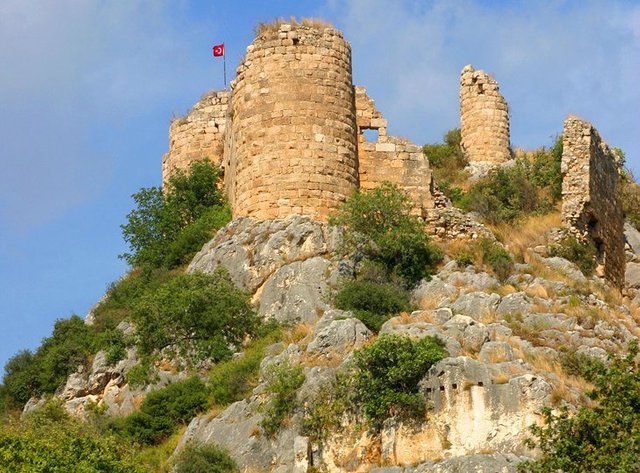
Pamukkale (Cotton Castle) was originally only the name of this 11th- or 12th-century castle, which sits just off the road leading from Pamukkale town up to the Hierapolis plateau. Most tourists don't bother coming up here, so this is a great chance to get away from the tour bus crowds for a while. If you do visit, you will be rewarded with superb views over the travertines from the castle ruins, which are well worth the detour. Sunset is the best time to come, as the changing light makes the travertine terraces glow.
6. Laodikeia
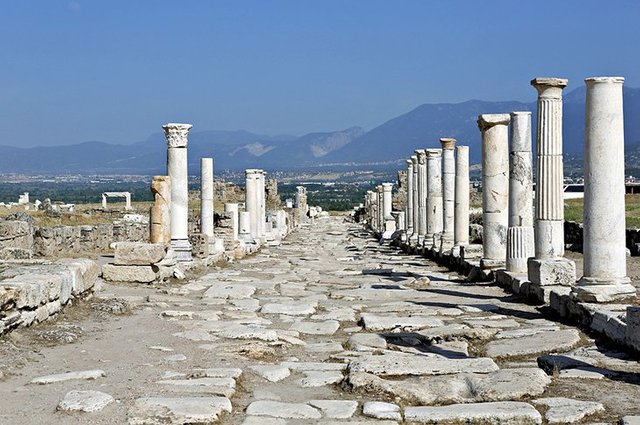
Lovely laodikeia was once home to Cicero. This Roman commercial center was a bustling city of industry, medicine, and trade. As Christianity began to take over from the earlier pagan religions, a large population of Christians and Jews lived here. The ruins, though sparse, are highly photogenic, and there's an interesting mix of remnants from the temples and theaters of early Roman settlement to the later Christian early-Byzantine era. It's a bit off the normal Pamukkale area itinerary (which usually just visits the terraces and Hierapolis), so if you have this on your things to do list, you're likely to get the entire site to yourself.
7. Aphrodisias
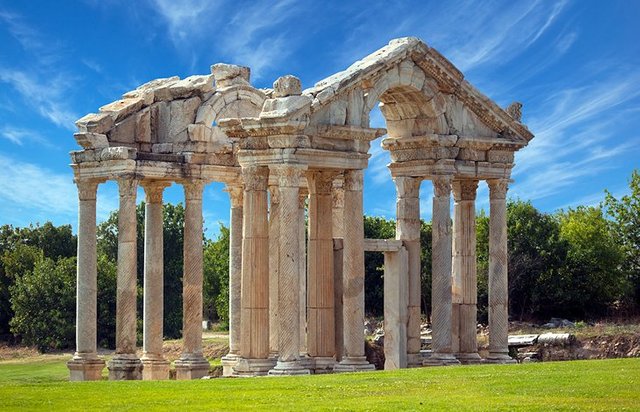
Modern research has transformed Aphrodisias from a place few visited into one of the most important historic sites in Turkey. The Temple of Aphrodite was built in approximately 100 BC and still has 14 standing columns (two with architraves in place). In the 5th century, the Byzantines converted this pagan temple into a three-aisled basilica.
Sources: 1. Me. 2. Planetware.